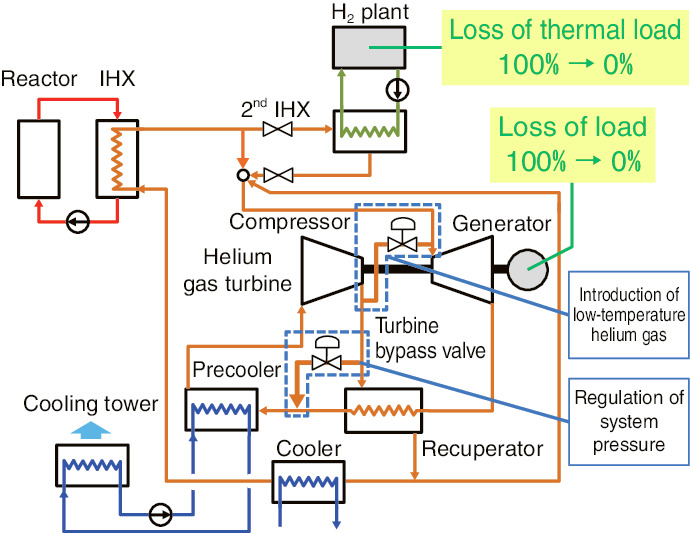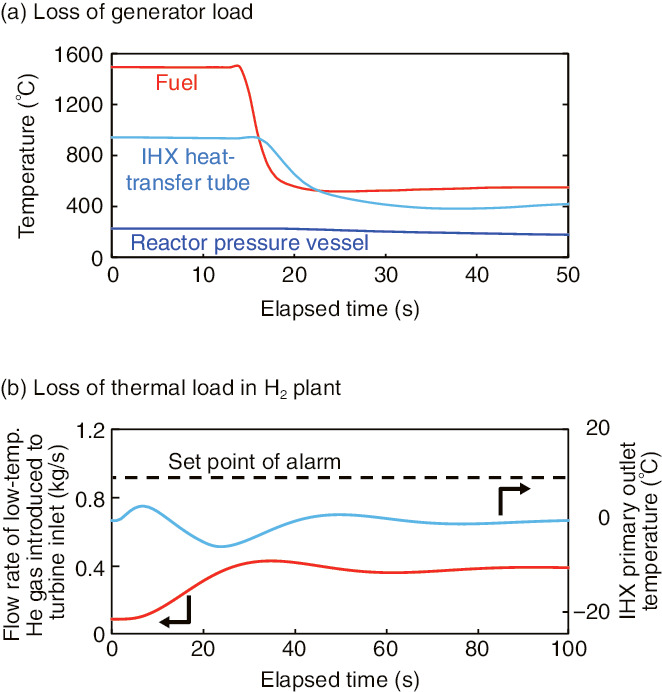
Fig.6-2 Mitigation system for the HTTR-GT/H2 plant

Fig.6-3 Plant dynamics of HTTR-GT/H2 plant
High Temperature Gas-cooled Reactors (HTGRs) are expected to extend the use of nuclear energy for heat applications such as hydrogen (H2) production owing to their inherently safe characteristics and high-temperature heat-supply capabilities. We are planning a demonstration program for carbon-dioxide-emission-free cogeneration of electricity and H2 using the High Temperature engineering Test Reactor (HTTR).
The program aims to demonstrate heat-application technologies for HTGR and to obtain a first-of-a-kind license for coupling chemical plants to nuclear reactors. We have been conducting system and component design for the HTTR gas-turbine cogeneration plant (HTTR-GT/H2 plant) since 2015. As a result, we have completed pre-licensing of the basic design with a power output of 1 MW and a H2-production rate of 30 Nm3/h.
In addition, we have performed preliminary analysis to ensure reactor safety during abnormal events in the heat-application system. First, we selected two new events—loss of generator load and loss of thermal load in an H2 plant—which must be evaluated under coupling of a helium-gas turbine and an H2 plant to the HTTR. Then, the plant dynamics of selected events are evaluated by RELAP5 code, a system-analysis code. We employed the same mitigation systems as commercial HTGR-cogeneration systems for demonstration of system-design technologies. As for the loss of generator load, a turbine-bypass control valve is devised to suppress turbine over-speed by regulating system pressure. Regarding the loss of the thermal load in an H2 plant, a turbine-inlet-temperature-control valve is installed to introduce low-temperature helium gas from compressor inlet to the turbine inlet to suppress the temperature increase in the reactor coolant (Fig.6-2).
The simulation results demonstrate that loss of the generator load does not impact the temperature of fuel or the reactor-coolant-pressure boundary and that the integrity of the plant is maintained even if control-system failure is assumed and conservative conditions for measurement errors and operational fluctuations based on the HTTR design are applied. In addition, the results demonstrate that the transients did not trip the alarm and that stable operation of reactors can be achieved during loss-of-thermal-load events in H2 plants (Fig.6-3).
Toward the realization of the HTTR demonstration test, it is important to share construction cost with foreign entities utilizing international collaboration. A further direction of study is to investigate a detailed test plan with countries interested in the demonstration program.
<Previous: 6 HTGR Hydrogen and Heat Application Research | Next: 6-2>